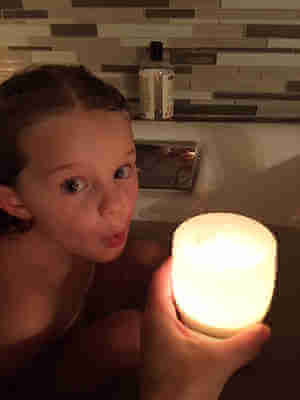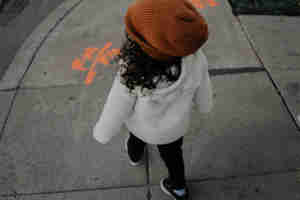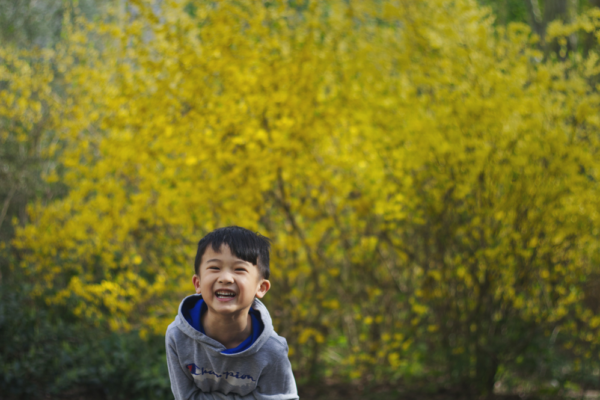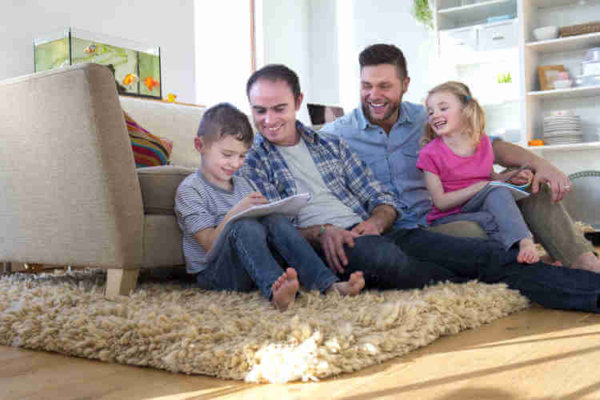Want to Raise Happy Kids? Teach Gratitude.
Ask any parent what they want for their children and they will likely say, “I just want her to be happy.” It is what we strive for within our own lives, and what we anguish over for our children. It guides education decisions, discipline, and even shopping. Lately there has been a surge of books, documentaries, and research that lay out the “guide” to happiness, with a common theme arising again and again: gratitude.
Gratitude. This subtle mental shift can lead to profound changes, emotionally and neurologically, in an instant.
Gratitude, a feeling of gratefulness or thankfulness, is simply intentionally noticing and appreciating what we DO have, something positive, or something beautiful. It is more than looking at the bright side. It is turning inward to drink from a deep endless well of calming and nourishing energy. It is accessible to us at any time, anywhere. So how do we teach our children this tool for happiness?
We begin by creating a culture in the home where gratitude is modeled and is an actual word that is used.
Children need many small lessons and LOTS of practice.
Mealtimes
Instead of just once a year at Thanksgiving, make it a regular practice to go around the table and say what you are thankful for. When it is your turn, model deeper awareness by sharing your gratitude for the warm home, clean running water, healthy body, or gorgeous sunset. As part of the routine, when your children excuse themselves from the table have them thank the person that made the meal (or who bought the meal at a restaurant). When preparing food share with your children your own gratitude for the easy access to a store full of fresh food or refrigerator with choices.

Bathtime
Kids love blowing out birthday candles. To signal the end of the bath, have your child pull the plug then (with supervision) blow out a candle and share something or someone they are thankful for. I started this tradition with my middle daughter as a toddler and her interpretation was to name a family member as she blew out each candle. She would say, “ I wish for Grammy” with a sweet smile and hand on her heart. As a kindergartener, it evolved into deeper gratitude, like “I’m grateful Boppa came home safely from war” and “I’m grateful my baby sister has a healthy heart.”
Practice = skills!
Giving and Receiving Gifts
This is an obvious place to express gratitude, with lots of embedded opportunities to build skills. Teach children HOW to accept a gift (through role playing and practice) by thanking the person when they first hand you the gift, reading the card first, opening the gift, then looking directly at the giver to say thank you again. We practice enthusiasm and smiles, teaching how to be grateful that the person was thinking of us as opposed to whether or not we actually like the gift. When giving gifts, include your children! Ask them what they think their friend may like for their birthday or what they are into and use that to guide the choice. If you are super crafty include them to add a homemade element. When making a card or choosing a gift for a teacher, talk to them about what it is that makes the teacher so special or helpful. Which leads us to…
Thank you cards
I am a total freak about this. The rule in our home is that a gift can be played with only after the thank you card is written. Scaffold it to the ages- small children can scribble or add a sticker, preschoolers can write their name, then as skills grow use post its with the words on it for them to copy and finally just the steps for the letter. (Greeting, thank you for, how they will use the gift, a question or comment about the person, and closing.) This has created an opportunity to practice focus, perseverance, fine motor skills, following directions, and awareness of others. All of which can usually be found on the list of skills we want for our children to have when they grow up. When my daughter wrote “Thank you for taking the time to choose this gift for me” I got a personal phone call from the friend who was blown away- happiness all around!
P.S. In the beginning your kids will not be skipping happily to write those thank you’s (responsibility doesn’t feel great at first), but remember the long-term benefits.
Family Meetings
Compliments such as, “thank you for” or “I appreciate,” is the start of every family meeting. Each member gives to every other family member. Little ones can use sign language for “thank you” or you can offer ideas for what you would like to be thanked for. Having this as part of a weekly routine and culture of the home changes the language in the family. Get started on family meetings here.
The Alphabet
Have fun with it by choosing a letter each day and challenging your child to find things with that letter they are grateful for. (This apple, my aunt, our animals..) Or choose a theme or something in nature to remind you to pause and name what you are grateful for every time you see it, like the moon, stars, or water.
Books
When in doubt, grab a book! These children’s books are wonderful teaching tools to enrich your library:
A Handful of Pebbles by Thich Nhat Hanh
All the World by Liz Scanlon
Thanks A Million by Nikki Grimes
The Thankful Book by Todd Parr and
The Secret of Saying Thanks by Douglass Wood, who wrote:
“The heart that gives thanks is a happy one,
for we cannot feel thankful and unhappy at the same time.
The more we say thanks, the more we find to be thankful for.
And the more we find to be thankful for, the happier we become.”
Gratitude can be as simple as that first sip of coffee, a hot shower, the wind on your face, or that quiet space when the children are finally asleep. The more YOU practice, the easier it will be to teach and model for your children,
so start small, and start with yourself.





Comments